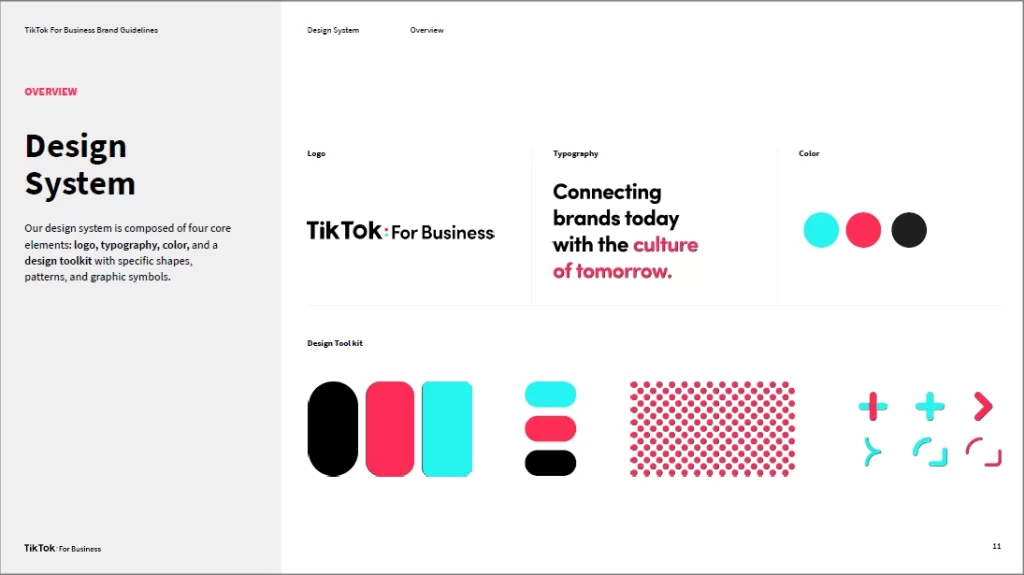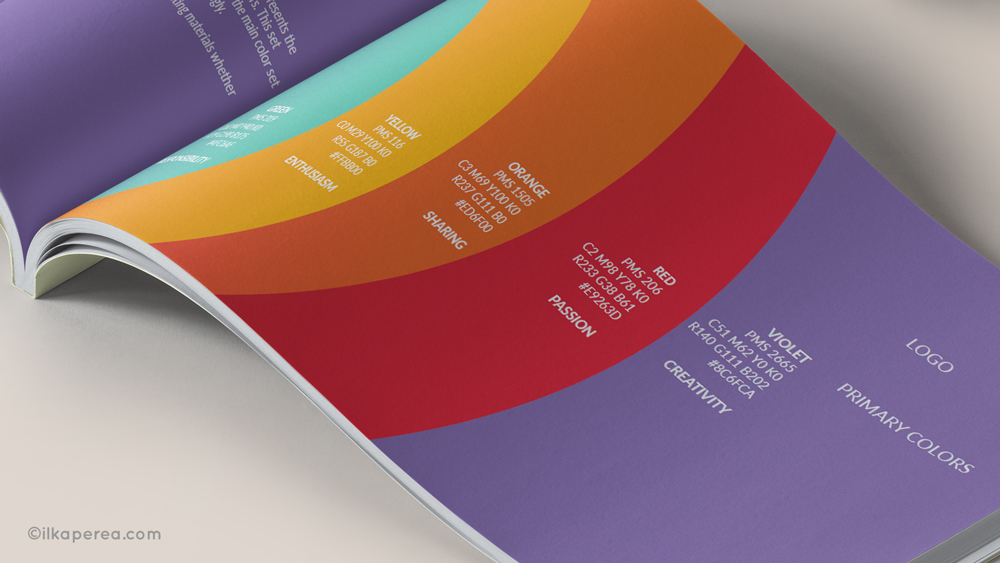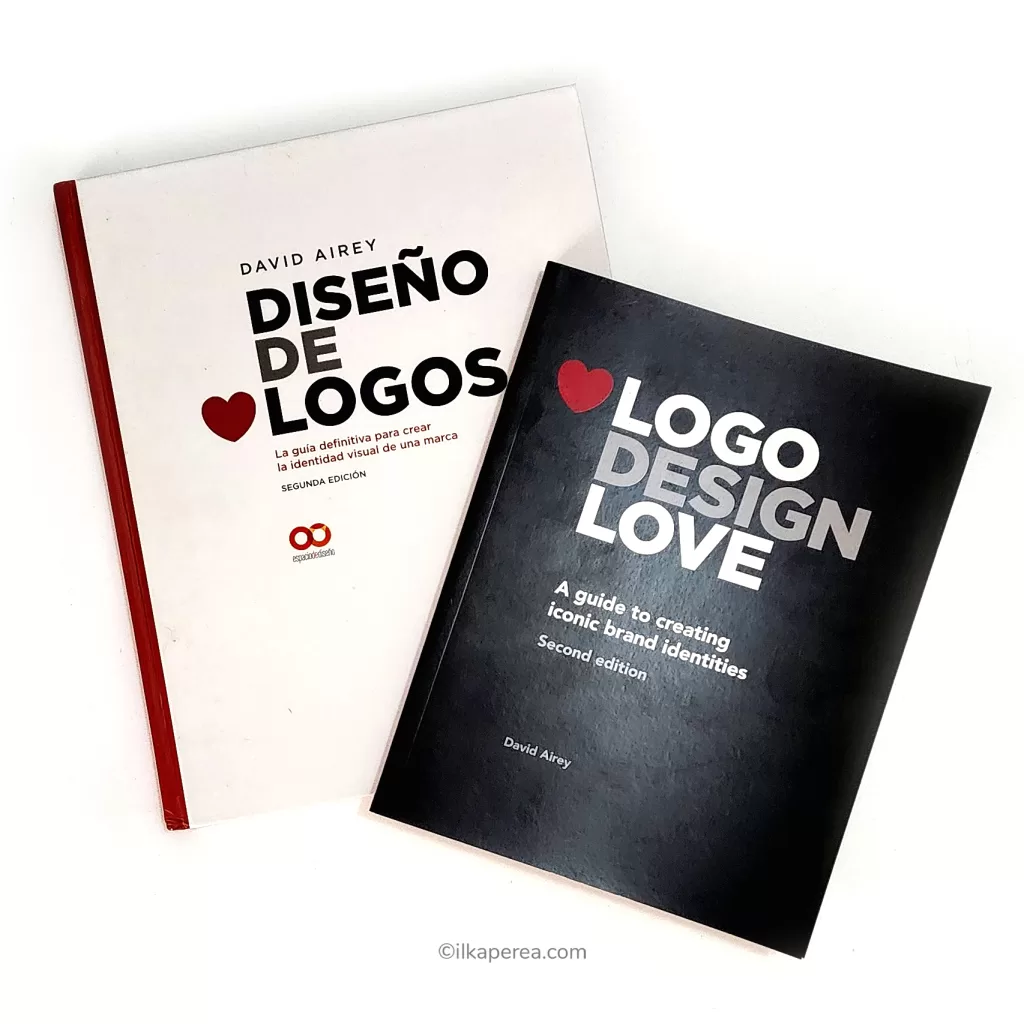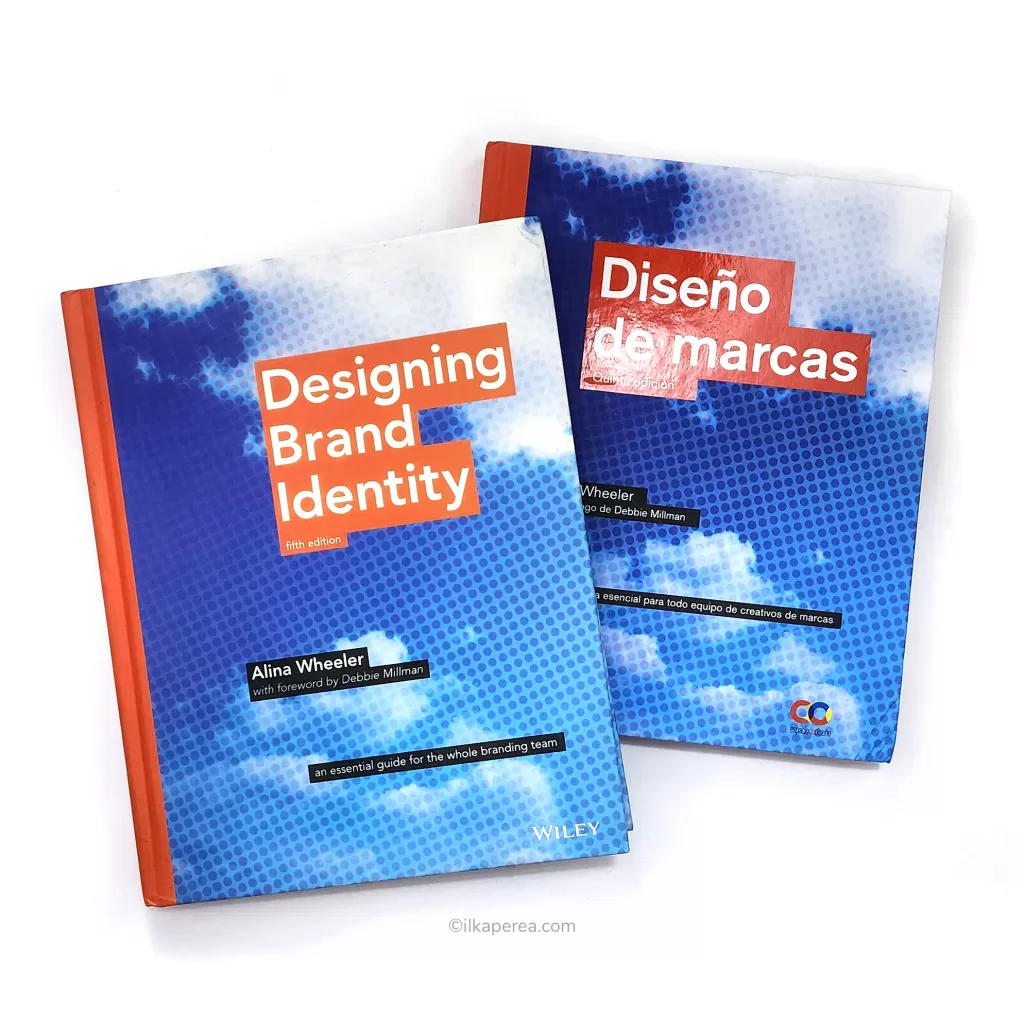What is the Visual Identity of a Brand?
Last Updated on March 31, 2024 by Ilka Perea Hernández
The visual identity of a brand is an essential component of establishing a lasting connection between the brand and its customers. Graphic designers must know what the visual identity of a brand is in order to design it and build a robust, coherent, and relevant identity to stand out in a competitive market.
Imagine that you exist, but you are invisible. I mean, you may be tangible; you can be heard or touched; however, you cannot be seen. You possess personality, principles, and values. You are capable of doing many things for others, such as providing a service or offering a product, but no one knows it because “you are not visible”.
Well, you are a “brand without a visual identity”.
In this post, I will explain what a visual identity is, starting with the definition of “brand” and continuing with the differentiation of some very similar concepts that many designers tend to confuse, such as “identity” and “image” as well as “brand” and “logo”. I will end with the components of a visual identity.
Table of Content
- Brand
- What is a Brand?
- Brand Building Blocks
- Brand vs. Logo
- Brand Identity vs. Brand Image
- Visual Identity
- What is the Visual Identity of a Brand?
- What is the Visual Identity of a Brand for?
- What are the Elements of a Visual Identity?
- What is a Visual Identity Manual?
- Summary
- Some Insights
- Designers and Visual Identity Manuals
- Designers and Brand’s Social Networks
- Some Literature
- Any Thoughts?
Brand

What is a Brand?
In the field of graphic design and marketing, the term “brand” is not limited to simply a logo or a name. A brand is a set of tangible and intangible elements that identify and differentiate a product, service, or company from others in the market. It includes visual aspects, such as the logo, colors, and typography, but also encompasses emotional and conceptual elements that shape consumers’ perceptions of the entity.
Brand Building Blocks
- Brand Foundation: composed of the brand’s mission and values.
- Brand Messaging: convey the tagline, slogans, and voice tone.
- Brand Experience: represented above all by customer service efforts.
- Brand Identity: The logo is the cornerstone of any brand’s identity.
Brand vs. Logo
While brands and logos are often confused, they’re actually different. Designers sometimes treat them as the same because they are related. But it’s important to tell them apart, both to understand what you’re designing and to give clients the best advice.
Brand Identity vs. Brand Image
The difference between “brand identity” and “brand image” is a fundamental issue in brand design and management. According to Aaker (1996), brand identity refers to how the brand wants to be perceived, i.e., the personality, values, and attributes that the brand wants to communicate to the public. It is its intangible and emotional essence that distinguishes a brand from others.
Brand identity is built from elements such as the name, logo, colors, typography, and other visual and verbal aspects that make up the brand’s presence. In this sense, brand identity is mainly controlled by the organization itself.
On the other hand, “brand image” refers to the actual perception that consumers and the general public have of the brand. Brand image is formed through the public’s interactions with the brand, shopping experiences, advertising, social media, and other touch points. Kotler and Keller (2016) emphasize that brand image is a mental construct based on consumer experiences and perceptions.
Visual Identity

What is the Visual Identity of a Brand?
The visual identity of a brand refers to the set of visual elements that represent the essence and values of the brand. These elements can include the logo, colors, typography, images, and other graphic elements that are used consistently across all brand materials.

But visual identity not only has aesthetic and functional components; it also has psychological implications. That is, the visual elements of a brand can evoke emotions and associations that influence the consumer’s perception of the brand’s quality, trustworthiness, and authenticity.
Design is the silent ambassador of your brand.
— Paul Rand, Graphic Designer
Creating a strong visual identity is crucial for the brand to establish a visual and emotional connection with the target audience.
According to Kotler and Keller (2016), a brand’s visual identity is an integral part of the brand identity as a whole. Through consistency in the use of visual elements, a brand can build recognition and trust among its customers. Visual identity also plays an important role in brand differentiation in a saturated marketplace.
What is the Visual Identity of a Brand for?
In the book “Designing Brand Identity” by Alina Wheeler (2017), she goes deeper into the importance of visual identity in building successful brands. Wheeler highlights how an effective visual identity not only communicates the brand’s personality and values but also facilitates consumer recall.
According to Kotler and Armstrong (2016), a brand’s visual identity is essential to differentiate it from competitors and to communicate its values and personality to the target audience. An effective visual identity design can generate instant recognition and build an emotional connection with consumers.
In academia, Aaker (2010) highlights the importance of brand identity as a strategic asset that can influence consumer preference and long-term loyalty. In addition, Kapferer (2012) argues that a consistent and appealing visual identity can contribute to building a strong and memorable brand.
What are the Elements of a Visual Identity?
Creating a strong visual identity is crucial for conveying a consistent and memorable brand image. In graphic and digital design, the elements of a visual identity typically include:
- Logo: The cornerstone of any visual identity, a well-designed logo is distinctive, memorable, and reflective of the brand’s essence.
- Color Palette: Choose a set of colors that resonate with the brand’s personality. Consistency in color usage helps in brand recognition.
- Typography: Selecting appropriate fonts for the brand’s communication is vital. Consistent typography reinforces brand identity across various platforms.
- Imagery/Photography Style: Establish a specific style for images and photographs associated with the brand. This can include the type of images, filters, and overall tone.
- Graphic Elements: Incorporate consistent graphic elements like shapes, patterns, or icons that complement the brand and reinforce its identity.
- Layouts and Grids: Define layouts and grids that are consistently used in various design materials. This provides a cohesive look and feel.
- Voice and Tone: Establish a consistent voice and tone for written communication. Whether it’s formal, friendly, or technical, it should align with the brand’s identity.
- Iconography: Develop a set of icons or symbols that represent key aspects of the brand. These can be used for various applications, from websites to promotional materials.
- Motion and Animation Guidelines: If applicable, define guidelines for motion and animation to ensure consistency in dynamic content, such as video intros or interactive elements.
- Branding Collateral: Extend the visual identity to various collateral such as business cards, letterheads, and merchandise.
What is a Visual Identity Manual?
A Visual Identity Manual, also known as a Brand Style Guide or Brand Guidelines, is a comprehensive document that outlines the rules and specifications for the consistent use of visual elements that make up a brand’s identity. It serves as a reference tool for designers, marketers, and anyone involved in creating materials that represent the brand.
Visual identity is only one aspect of a brand’s overall identity. But it is a crucial component. To ensure that it is implemented correctly, a detailed Visual Identity Manual is needed to serve as a standard or specification for brand identity designers when defining the design of brand elements. The brand style guide defines aspects such as the logo, colors, typography, etc., as well as how to apply them visually.
Summary
- A brand is a set of tangible and intangible elements that identify and differentiate a product, service, or company from others in the market.
- A logo is a graphic symbol or emblem that visually represents the brand of a company, organization, or product.
- Brand identity is mainly controlled by the organization itself.
- Brand image is formed through the public’s interactions with the brand.
- The visual identity of a brand refers to the set of visual elements that represent the essence and values of the brand.
- The elements of a visual identity typically include a logo, color palette, typography, imagery and photography style, graphic elements, layouts and grids, voice and tone, iconography, motion and animation guidelines, and branding collateral.
- A visual identity manual is a document that outlines the rules and specifications for the consistent use of visual identity elements for a brand.
Some Insights
A brand’s visual identity plays a crucial role in building a company’s image and emotional connection with consumers. By taking a strategic approach to visual identity design, brands can strengthen their market positioning and build long-term loyalty. As designers, we are a key component in this strategy, but only if we understand what a brand is, its identity, and how to develop a visual identity manual.
Designers and Visual Identity Manuals
As designers, we are often asked to design the visual identity manual for small or large companies. Branding projects are often very complex but very well-paid.
In my experience, large companies understand the scope and value of an identity manual, so those companies are willing to invest. However, this is not the case with small companies or start-up projects. On the one hand, they don’t have big budgets. On the other hand, they do not perceive the value of these manuals. So, in general, they only ask for the logo design without a manual. In this sense, it is necessary to do some teaching so that clients understand how necessary visual identity manuals are for the image of their brands.
Designers and Brand’s Social Networks
Visibility is one of the challenges faced by most start-up brands and fledgling projects. Due to technological advances, the presence of large audiences on social networks, and the highly visual communicative behavior of new generations (who express themselves more with images than words), leading companies are looking to ensure that their brand images are aligned and consistent with their personalities and values.
As a result, many brands prefer designers to manage their social networks, just as a community manager would. You may have noticed that many of the vacancies for designers ask for social media management, just as community manager vacancies ask for proficiency in graphic and digital design concepts and techniques.
Despite the general discomfort of the overlapping functions between graphic design and community management, the reality is that this trend in the market will increase. Therefore, from my experience as head of the design department, I also suggest increasing your knowledge of digital marketing.
Some Literature
I would like to recommend two extraordinary books that could help you learn about branding:
- Designing Brand Identity by Alina Wheeler
- Logo Design Love by David Airey


Any Thoughts?
In the comments section, tell me if you already knew about the difference between a logo and a brand. As a designer, have you done branding and what has your experience been like?

Share
Spread the love… and this post!
If you liked it, share this post on your social networks. Smart designers share good things with others.

Bibliography
- Aaker, D. A. (1996). Building Strong Brands. Free Press.
- Aaker, D. A. (2004). Brand Portfolio Strategy: Creating Relevance, Differentiation, Energy, Leverage, and Clarity. Free Press.
- Aaker, D. A., & Joachimsthaler, E. (2000). Brand leadership. Free Press.
- Airey, D. (2015). Logo Design Love (2nd ed.). Pearson.
- Kotler, P., & Keller, K. L. (2016). Marketing Management (15th ed.). Pearson.
- Wheeler, A. (2017). Designing Brand Identity: An Essential Guide for the Whole Branding Team. John Wiley & Sons.
- Munari, B. (2019). Diseño y comunicación visual: Contribución a una metodología didáctica (2a ed.) Editorial Gustavo Gili.
- Poulin, R. (2018). The Language of Graphic Design Revised and Updated: An illustrated handbook for understanding fundamental design principles. Rockport Publishers.

